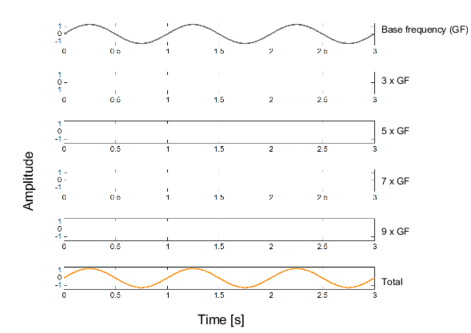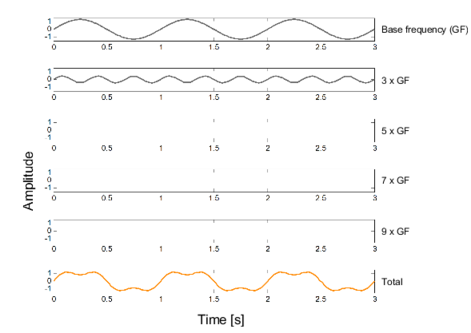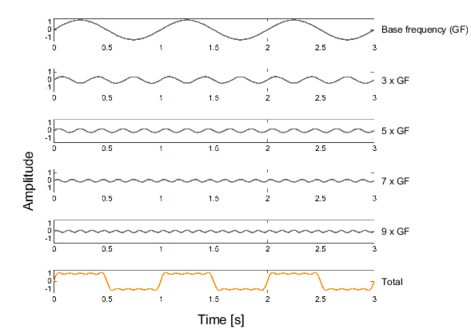The following figures show how a square wave signal is created by overlapping sinusoidal oscillations.
Sinusoidal oscillation with 1 Hz and an amplitude of 1.
下图显示了一个方波信号是如何通过重叠的正弦波产生的。
1 Hz 的正弦波,振幅为1。

Fig.: Pure sinusoidal oscillation
图: 纯正弦波振荡
Sinusoidal oscillation with 1 Hz and an amplitude of 1 and sinusoidal oscillation with 3x the base frequency, i.e. 3 Hz and a lower amplitude.
具有1 Hz和振幅为1的正弦振荡,以及具有3倍基频(即3 Hz和较低振幅)的正弦振荡。

Fig.: Sinusoidal oscillation with one harmonic
图: 带有一个谐波的正弦波
Sinusoidal oscillation with 1 Hz and an amplitude of 1 and sinusoidal oscillations with 3x, 5x, 7x and 9x the base frequency and a lower amplitude.
频率为1Hz且振幅为1的正弦振荡,以及频率为基频的3x、5x、7x和9x且振幅较低的正弦振荡。

图: 具有多个谐波的正弦波